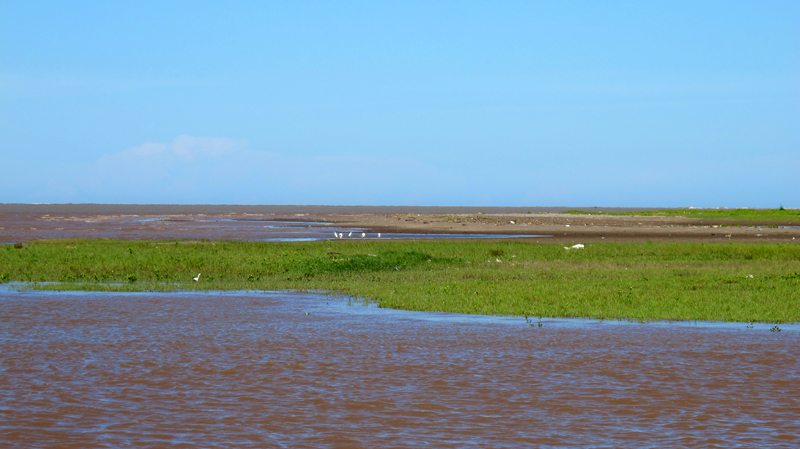The Red River Delta Biosphere Reserve is one of the biosphere reserves recognized by UNESCO in Vietnam. This area is very special, with a diverse and rich ecosystem, playing a crucial role in both nature conservation and the sustainable development of the delta region.
1. Location and Area
The Red River Delta Biosphere Reserve is mainly located in the northern provinces of Vietnam, including Hanoi, Bac Ninh, Hung Yen, Hai Duong, Nam Dinh, Thai Binh, and Ninh Binh. The total area of this region is approximately 1,500,000 hectares.
2. Ecological Features
Flora and Fauna: This area has a very rich ecosystem with many species of wild animals, including several rare species such as langurs, tigers, waterfowl, and fish of the Red River. In addition, the region is home to various plants, such as mangrove forests, cajeput forests, riverbank forests, and the crops cultivated by local people.
Typical Ecosystems: The Red River Delta Biosphere Reserve includes ecosystems such as mangrove forests, riverbank mudflats, wetlands, and rice fields. These are habitats where many species of animals and plants live and develop, forming food chains that help maintain ecological balance.
3. Cultural and Social Values
Connection with the Community: The communities living in this area primarily rely on agriculture, fishing, and eco-tourism. The Biosphere Reserve not only serves as a natural conservation area but also helps improve the livelihoods of local people through conservation activities and sustainable development.
Cultural Heritage: Besides its ecological value, the region is also closely associated with many cultural and historical heritage sites of Vietnam, such as heritage areas in Hanoi, traditional villages, and historical architectural works.
4. Role and Objectives
The main objective of the Red River Delta Biosphere Reserve is to conserve biodiversity, protect the natural environment, and support sustainable development activities as well as environmental education for local communities. This area plays an important role in Vietnam’s ecological conservation strategy and the protection of the Red River region.
5. Conservation and Sustainable Development Activities
Scientific Research: Research on fauna, flora, ecosystems, and the impact of climate change on the region’s ecosystems is essential.
Eco-tourism: This area also attracts tourists due to its natural beauty, eco-tourism activities, and local cultural experiences.
6. Status and Challenges
Although this area has significant conservation value, it also faces many challenges such as environmental pollution, over-exploitation of resources, and the impacts of climate change. Conservation and sustainable development measures are always prioritized in managing this biosphere reserve.

